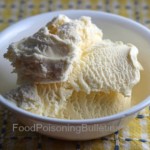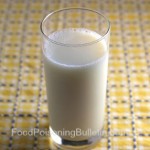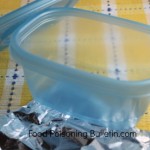Two years ago, scientists at the CDC launched a pilot program to sequence the DNA of every Listeria monocytogenes bacteria sample tied to an illness in this country. As a result, many more outbreaks are being identified, including ones that were hidden. Brendan Jackson, a medical epidemiologist with the CDC told Science that "now that we're turning whole-genome sequencing on, we're identifying outbreak after outbreak." The outbreaks are also originating in foods that are usually associated with foodborne illness outbreaks, such as ice cream and caramel apples. This new method identifies gaps in the food safety system and may lead to more testing of foods that were not suspects in outbreaks before now. The deadly Blue Bell Listeria monocytogenes outbreak, that has sickened 10 people … [Read more...]
Research Project To Study Improved Salmonella Detection
USPOULTRY and the USPOULTRY Foundation announce the completion of a research project at the University of Arkansas in Fayetteville, which developed a rapid detection assay for Salmonella that may be used in U.S. poultry processing plants. Salmonella contamination on poultry has been a huge problem in U.S. facilities, as evidence by the large Salmonella outbreak linked to Foster Farms chicken processing plants last year. The method detects and quantifies viable Salmonella servers in poultry carcasses without selective enrichment. The researchers found that growth of Salmonella occurred on Luria Bertani broth than on selective enrichment. Using nonselective media that supports the rapid growth of this bacteria greatly cuts assay time. The project "provides potential reliable and rapid … [Read more...]
Consumer Food Handling Leads to Cross-Contamination
A new peer-reviewed article by Jeannie Sneed, et al, published in Food Protection Trends says that consumer food handling practices lead to cross-contamination. Although outbreaks that sicken multiple persons are usually linked to mass produced foods or restaurants, about 9 to 15% of most foodborne illnesses occur in the home. The study looked at the "Food Safe Families" clean and separate messages and to determine the impact of external safe food handling cues. One hundred-twenty-three parents who were between 20 and 45 years of ago, who prepared four or more meals at home each week, and had at least one child less than 13 years old in the home were studied. Two experimental groups were educated about safe food handling; one through traditional food safety messages, the other through … [Read more...]
Study Finds Raw Milk Benefits Do Not Outweigh Risks
A study conducted by the Department of Environmental Health Services at Johns Hopkins Bloomberg School of Public Health and Johns Hopkins Center for a Livable Future has found that the benefits of consuming raw milk do not outweigh the risks. The study was done for the Maryland General Assembly as they consider a bill to legalize the on-farm sale of unpasteurized milk in that state. The study, which was completed in December 2014 but just released to the public, states, "Overall, our review identified no evidence that the potential benefits of consuming raw milk outweigh the known risks." The bill, House Bill 3 was introduced to the Maryland House of Delegates during the 2014 session. The researchers looked at the scientific literature for studies regarding health benefits and risks … [Read more...]
New Study Links Government Food Safety Spending and Illness
A new study conducted at the University of Washington School of Nursing has found that local government spending on food safety and sanitation programs affects the number of illnesses occurring in surrounding areas. Researchers looked at 11 years of data from county health departments in Washington state and New York. In Washington state, cuts to public health programs correlated with increasing Salmonella infections. In New York, cuts to public health programs correlated with increased Cryptosporidium infections. There have been major budget cuts and job losses in many local health departments around the country in recent years. Higher rates of Salmonella infections, which are usually caused by contaminated food, are associated with fewer food safety services. Cryptosporidiosis is … [Read more...]
Reusable Plastic Containers Still Harbor Bacteria After Cleaning
A new study conducted at the University of Markansas at Fayetteville has found that Salmonella and other foodborne pathogens attach to reusable plastic containers used in industry and remain even after cleaning. Those pesky biofilms are, again, the culprit. Scientists looked at the materials used to make these food containers that are used to transport fruits and vegetables to grocery stores. In the study, researchers let Listeria monocytogenes, Salmonella, and E. coli O157:H7 bacteria to grow on the reusable plastic container (RPC) surface and then cleaned and sanitized the containers according to industry standards. In all cases, the material still had biofilms that protected the bacteria even after cleaning. Biofilm is a kind of slime made of protein that surround the bacteria, … [Read more...]
CDC Study: Increase in Raw Milk Food Poisoning Outbreaks
The Centers for Disease Control and Prevention has released a new study in Emerging Infectious Diseases stating that the number of food poisoning outbreaks in the United States caused by raw (unpasteurized) milk increased from 30 in 2007 - 2009 to 51 in 2010 - 2012. Most of the outbreaks were caused by Campylobacter bacteria, and most occurred in states where the sale of raw milk is legal. Most worryingly, this increase in outbreaks happened at the same time there was a decline in the number of states where raw milk sales are legal, from 28 in 2004 to 20 in 2011. A food poisoning outbreak is defined as two or more cases of a similar illness resulting from eating a common food. The outbreaks caused by raw milk resulted in 979 illness and 73 hospitalizations. The bacteria responsible … [Read more...]
Wash Your Hands to Prevent Foodborne Illness!
Most food poisoning cases happen in the home. Why? Research from Kansas State University finds that 90% of home chefs violate food safety rules, especially rules about hand washing and cross-contamination. Cross-contamiantion happens when hands are not washed after handling raw meats, when cutting boards and utensils are used for fresh foods after coming into contact with raw meats, and when preparing food. The study was conducted to discover which type of food safety education resulted in the best food safety practices. One hundred twenty three participants were divided into three groups. The first group was told about the food safety campaign messages of "clean, separate, cook, and chill." The second group looked at pubic service announcements on this message, and the third did not … [Read more...]
Research Discovers New Salmonella Serotype
Researchers at Texas Tech University's Department of Animal and Food Science have discovered a new serotype of Salmonella bacteria. It was confirmed by the Pasteur Institute in Paris, which has the international reference center for Salmonella. The new strain is called Salmonella Lubbock. Marie Bugarel, a research assistant professor at the University, discovered the bacteria. One of her mentors at the University, Dr. Guy Loneragan, said in a statement, "more important than the name, however, is that this discovery illustrates there is more that needs to be discovered about Salmonella and how it interacts with cattle populations. With this understanding will come awareness of how to intervene to break the ecological cycle and reduce Salmonella in animals and in beef, pork, and chicken … [Read more...]
New Study Links Phthalate Exposure with Lower IQ
A new study conducted at the Columbia University Mailman School of Public Health finds that children exposed during pregnancy to elevated levels of phthalates had lower IQ scores. The study, published in the journal PLOS ONE, found that those children had an IQ more than six points lower than the average. The two chemicals are di-n-butyl phthalate (DnBP) and di-isobutyl phthalate (DiBP). They are found in many consumer products, including plastic food and beverage containers. Phthalates are banned in some children's toys, but the compounds are rarely listed on ingredient labels so they are difficult to avoid. In the study, researchers followed 328 New York City women and their children from low income communities. The women's exposure to four phthalates in their third trimester were … [Read more...]













